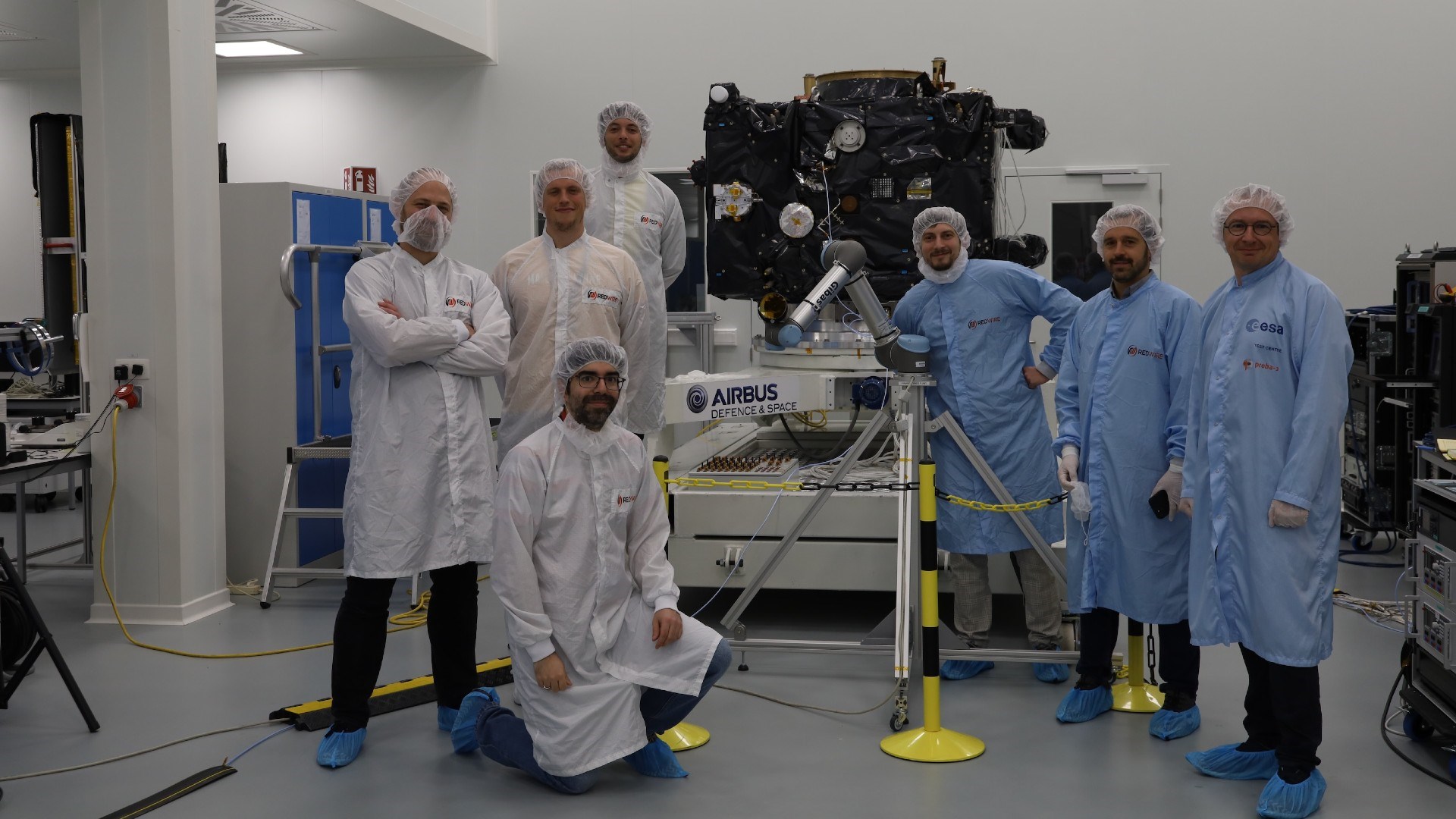
Around the Sun is a kind of atmosphere called the corona, where the temperature reaches about 1-2 million degrees Celsius. It is extremely difficult to observe and explore because the sunlight effectively blinds space instruments aimed at it.
Therefore, its existence remains somewhat of a mystery. It is strange that it is so hot, while what we call the Sun’s surface is ‘only’ about 6,000 degrees Celsius. One would think it would get cooler the farther away from its surface you got.
Now, attempts are being made to get closer to some answers using a new, innovative space instrument. This is happening with the help of DTU Space in collaboration with the European Space Agency (ESA) and several other partners. The system has been successfully tested in Belgium.
“This new technology will revolutionize future observation methods in space. We have the opportunity to investigate the Sun’s mysterious corona. At the same time, we are developing a new concept for exploring the universe,” says DTU Space professor John Leif Jørgensen.
Two satellites to fly as one unit
The idea behind the mission is to use two satellites, have them fly in precise formation, and let one ‘shade’ the sunlight while the other functions as a detector, capturing light in the form of photons from the corona around the Sun after the light has passed the first satellite.
This way, the Sun’s strong light does not blind out the photons, the light signature, from the corona.
This can only be done in space, where the light from the much stronger Sun is not scattered in an atmosphere as is the case here on Earth.
“We can work over large distances by making two satellites act as one combined instrument. This achieves an effect far greater than what can be produced with traditional space telescopes, where photons are focused and collected using mirrors,” says John Leif Jørgensen.
“The alternative would be a 200 to 300-meter-long satellite, larger than the International Space Station (ISS).”
To be launched from India
The plan is to launch the mission into space this fall. It will be done from India.
One satellite, called the Coronagraph spacecraft, has a telescope that, in the direction of the Sun, is kept in the centre of the shadow of the other satellite, called the Occulter spacecraft. The two spacecraft will be controlled precisely at distances between 75 and 600 meters from each other, at an altitude of about 60,000 kilometres above Earth, with an accuracy of one millimetre.
Maintaining the correct position between the two satellites and in relation to the Sun is an extremely challenging task, requiring super-precise formation flying. Building such an instrument is, therefore, also a comprehensive task.
“It is very forward-thinking of ESA to work with this technology,” says John Leif Jørgensen.
“This is new territory for us and a demonstration mission that will determine how space missions are designed in the future. A coronagraph is only one example of what this groundbreaking technology can be used for. So we are naturally very much looking forward to getting it launched. So far, we have shown that the entire navigation and positioning package, which we contribute to, works as it should”.
Autonomous positioning with AI
The spacecraft is being developed to perform the task autonomously using AI-based systems without needing to be controlled from Earth.
Positioning occurs in several stages. This is where DTU comes into the picture. Here, the equipment that will position the two satellites super precisely is developed and tested. The system is called the Proba-3 Vision-Based Sensor System.
First, the two satellites are brought together at about 250 meters. Then, the system from DTU Space is used to locate the two spacecraft. This is done by a wide-angle camera on one satellite tracking and recognizing a pattern of LED lights on the other. This way, their relative distance and orientation are known.
Next, another camera is used to recognize an even smaller LED pattern, providing positioning with an accuracy within one millimeter at a distance typically of 150 meters, but the system works from 100 kilometers down to one meter.
Subsequently, a laser is used, which sends light from the Occulter spacecraft to the Coronagraph spacecraft, which sends it back again. Thus, the relative distance between the two satellites can be controlled within about one millimeter.
Finally, a Shadow Positioning Sensor System based on small photodetectors is used. They register whether a shadow about five centimetres in diameter hits the detector of the Coronagraph spacecraft correctly. If not, the position of the spacecraft is adjusted slightly. When the shadow is focused, the instrument is ready to measure the light from the Sun’s corona.
Challenging the limits of space research
“Everything must work in the right sequence and correctly, and we have shown that this can be done on a smaller scale in the laboratory, on a full scale in the basement corridors at DTU, and then at astronomical observatories, but with exactly the system, we will use on the real mission. It is a major milestone. The next big step is to get it into space and qualify it in a real situation,” says John Leif Jørgensen.
“Proba-3 is a demonstration of formation flying, where these DTU systems form the core of the mission. It is an innovative research and development project that challenges the boundaries of space research.”
